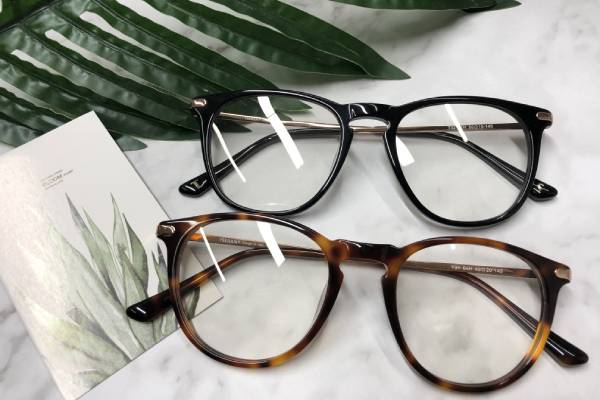John Lennon Imagine
The circular wire-rimmed glasses like these were made popular by the Beatles' idols in the 1960s and immediately became a favorite of hippies and music lovers around the world. This modern version has an ultra-light frame made of stainless steel that resists rust and corrosion. Flexible spring hinges and coated temples are very comfortable. For fans of retro-inspired accessories, the glasses are a favorite.
39Dollar Glasses
39DollarGlasses was developed by ophthalmologists to provide people with an inexpensive way to get high-quality finished prescription glasses.
They use the same high-quality materials, but because of their large volume, they offer a high discount because they have no additional overhead limits. Elastic glasses are made of high-quality titanium, one of the strongest metals on Earth. For you, that means your bent titanium glasses won't rust or break easily. Looking stylish and active, when you buy a pair of elastic glasses on 39DollarGlasses, your prescription glasses include full UV protection, and the thin and light lenses can be customized to your needs.
Application of titanium alloy
Titanium alloy is mainly used in aircraft engine compressor parts, followed by rocket, missile, and high-speed aircraft structural parts.By the mid-1960s, titanium and its alloys were already in common industrial use, making electrodes for industrial electrolysis, condensers for power stations, heaters for petroleum refining and seawater desalination, and pollution control devices.Titanium and its alloys have become a kind of corrosion-resistant structural material.In addition, it is used to produce hydrogen storage materials and shape memory alloys.
Is it true that green film prevents blue light?
Some lenses filter out harmful blue light by reflective multiplayer coating. The lens has a bright blue-violet coating. Green film anti-blue lens relies on the lens material itself to absorb blue light. Therefore, it is impossible to know if the lens can really block the blue light only by looking at the film layer. Instead, it is necessary to use the test equipment of blue light blocking rate or ask the manufacturer to provide relevant experimental data. There is no problem wearing an anti-blue lens unless the user has a high demand for color authenticity, like painters, graphic designers, etc. Because when using anti-blue glasses to see white blue objects, there will be a certain color deviation. It is up to the above workers to make their own decisions.
The lifetime of contact lens
Traditional type: the replacement cycle is more than 3 months, not more than 1 year, that is, we say we abandon after one season, and we can abandon after half a year and a year.
Frequent-change type: the replacement cycle is more than 2 weeks, not more than 3 months, that is, we often say that we throw them after 1 month or two weeks.
Abandoned type: as a one-time use, common for the day use.
Contact lenses, like food, have an expiration date. For example, the shelf life of daily contact lenses is one day (after it is opened), and can not exceed this time. And the life span of a pair of glasses depends on how long you use them each day. Although different lens materials determine different wear times, we recommend that soft lenses should not be worn for more than 8 hours per day (do not wear soft contact lenses to sleep). Traditional contact lenses can be used for a long time, so the lens is easy to produce protein-lipid deposition, and then they are easy to cause eye surface inflammation and hypoxia reaction. If conditions permit, it is recommended to choose the frequent-change type and discard type, the shorter the cycle, the healthier.
Metal square frame eyeglasses
A large square frame shows a face small, with a strong stylish sense. A lot of stars often use it for concave modeling, making their whole collocation more tide. People with diopters try to avoid choosing such large frames as daily optical glasses to wear.
Lens anti-fogging agent
To be specific, a layer of the anti-fogging agent is sprayed (coated) on the surface of the lens to form a dense, absorbent, ultra-thin, and ultra-transparent biological coating. The coating chelates the droplets inside the coating (chelating means processing the material into a digestible form) to form a continuous and supper transparent chelating coating, which converts the droplets into a transparent micro-glass layer, thus preventing fogging. Spray anti-fogging agent on the surface of the lens, and then wipe evenly with an ordinary lens cloth. It can be used on most lenses. They are easy to use but have relatively short anti-fogging time. During use, the lens should not be wiped or washed. Long time use will affect the lens life.











































